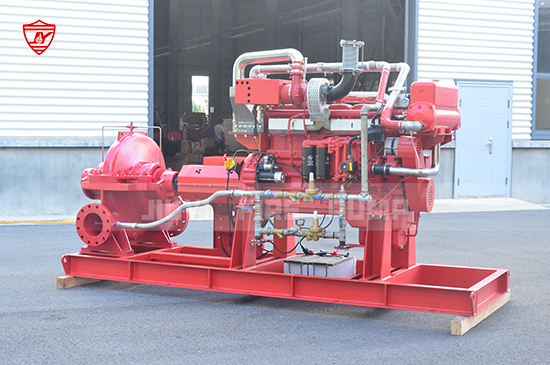Fire pump systems are the backbone of a reliable fire protection setup. But passing a fire pump inspection—especially the first time—requires preparation, attention to standards, and routine maintenance. Whether your system is electric, diesel, or part of a package set, here’s how to ensure it meets compliance on inspection day.

Start by knowing what the inspector is looking for. Most fire pump inspections follow NFPA 20 (Standard for the Installation of Stationary Pumps for Fire Protection) and NFPA 25 (Standard for the Inspection, Testing, and Maintenance of Water-Based Fire Protection Systems).
Key areas of focus include:
Correct installation per NFPA 20
Weekly and annual testing records
Proper signage and labeling
Accessibility and clearances
Sufficient power supply (for electric pumps) or fuel (for diesel pumps)
Before the inspector arrives, perform a mock inspection using a fire pump inspection checklist. Test both automatic and manual start functions. Make sure gauges, controllers, and alarms work correctly. Pay attention to:
Flow test results
Suction and discharge pressures
No visible leaks or corrosion
Clean and debris-free pump room
One of the easiest ways to fail an inspection is poor documentation. Keep records of:
Weekly churn tests
Annual flow tests
Maintenance and repair logs
Any system upgrades or changes
Have them readily accessible in a labeled binder or digital folder for the inspector.
Ensure the pump room is:
Well-lit and ventilated
Free of storage or obstructions
At a stable temperature (especially for diesel pumps)
Check that all valves are open and functional, and confirm that emergency systems like backup power are operational.
Using a UL-listed, NFPA 20-compliant fire pump from a reputable manufacturer—like Better Technology Group—adds credibility and assurance. These pumps are engineered and tested to meet international standards, helping you avoid compliance issues.
Operators and facility staff should know how to run, test, and troubleshoot the fire pump system. Train them on:
Weekly and monthly inspection routines
Common fault codes
Emergency procedures
Passing your fire pump inspection the first time is achievable with the right preparation and equipment. Regular testing, thorough documentation, and a reliable system design are the keys to compliance and, more importantly, fire safety.